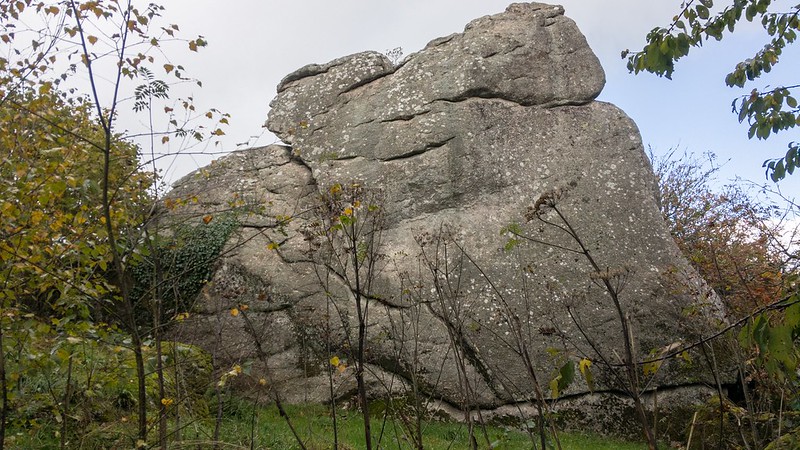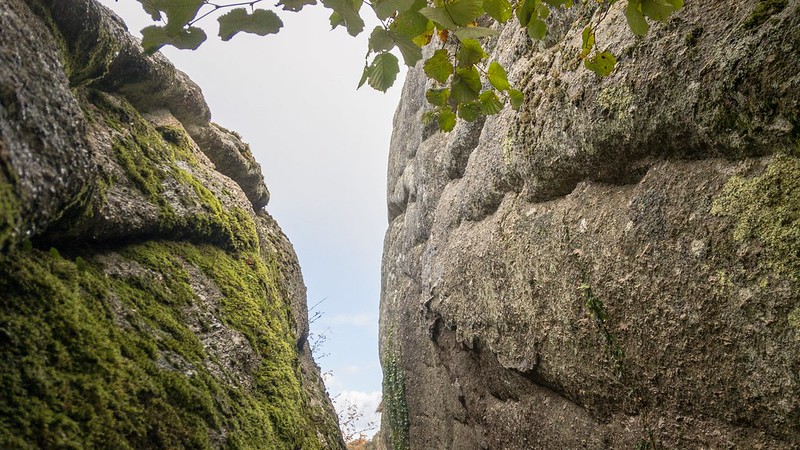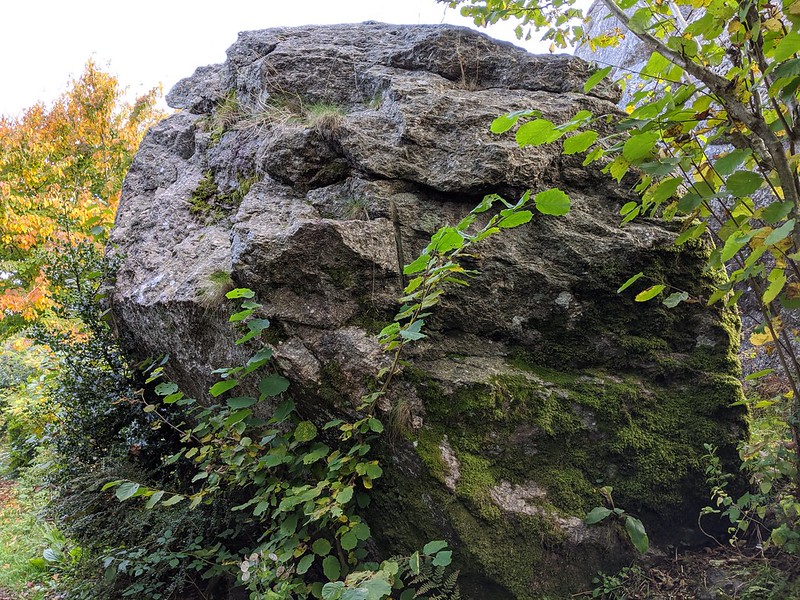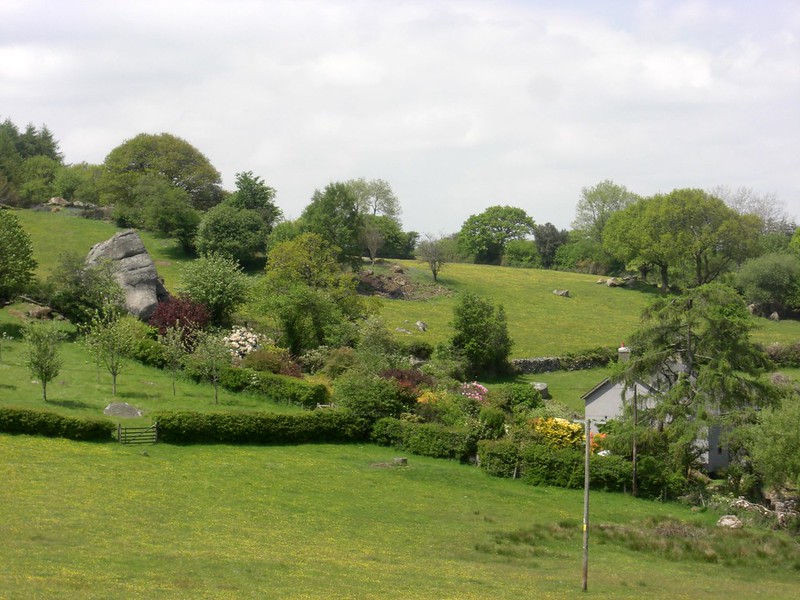TORS OF DARTMOOR
a database of both lesser- & well-known rocks and outcrops
Willingstone RockWillistone Rocks
 It seems that Samuel Rowe was one of the first to mention Willingstone Rock in 1848 describing its position as "North of Moreton Hampstead. The Benchmark just below gives a height of 1066ft." Clearly marked on OS maps it stands at the entrance and just within the confines of the 46-acre Willingstone Farm.  In his Guide to Dartmoor from 1909 William Crossing only makes a disappointing one-line reference to the Rock but in the booklet The Teign From Moor to Sea published in 1986 he adds a little more detail writing "It has been suggested that Willingstone Rock, in the neighbourhood of Wooston Farm, was really the object which Risdon alludes to as Whitstone. As there is some similarity in the names, this is of course possible; but the description he gives certainly does not seem to indicate that rock, whereas it exactly applies to Hel Tor." The book to which Crossing refers to is that compiled by Tristram Risdon and is entitled 'The Chorographical Description or Survey of the County of Devon' first published in 1714.  It is not until 1944 that we get a better idea of the size and appearance of the Rock in an account from Arthur Wilde following a visit to nearby Wooston Rocks aka Pinmoor Rocks at SX 7532 8871: "In the lane nearby stands the tall Willingstone Rock which many of my readers will know well and which with its creeper covered top always reminds me of the ruins of a small chapel."  The Rock presents as a giant conical split boulder that can usually be seen with ease from the wayside, but it is partly obscured by vegetation in the summer months, so a better view at this time can be had from the public footpath and field a short way to the east where it is seen to tower above the farm. It is a peculiar feature that dominates the landscape here and is reported to have a probable rock basin on top as marked on old OS maps and recorded by G.W. Ormerod in 1859 under the name of 'Willistone Rocks'. In his detailed assessment of Dartmoor's geological features, Ormerod, in addition to describing the basin as 'irregular', notes "a perforation in the side of a basin" of which the only other examples observed at that time were at Fur Tor and Great Mis Tor. There was also at one time a weather vane on the Rock that is remembered by the author John Hayward (1991) in Dartmoor 365. More granite extends into the private grounds of the farm where a huge domed boulder resides closer to the house.
| ||||||||||||||||||||||||||||